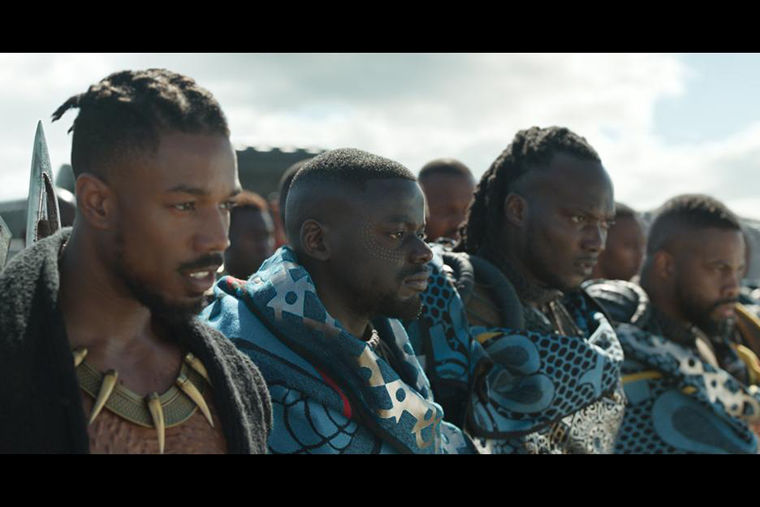Black Panther slashes through expectations
February 15, 2018
In “Black Panther,” director Ryan Coogler creates an Afro-centric world free of colonialism and visualizes one of the most important stories of the year.
It won’t win an Oscar, but that’s not why good filmmakers make movies. They do so to impact lives and create change. This film gives a role model to admire to every little black boy and girl and a long overdue love letter to every black man and woman who grew up yearning to see themselves as silver screen superheroes.
Coogler poured his heart into this script and it’s evident throughout the film. Black superheroes in movies existed before this film but not on this scale and not through such a purely Afro-centric gaze.
The plot revolves around a king and a long lost heir—a safe, predictable story for Marvel. The only reason I knew it was a Disney movie was the offbeat humor shoehorned into the film. It takes what could have been touching, vulnerable moments that reveal internal conflict and kills them. But this isn’t surprising as it happens in every Marvel movie.
On the surface, the jokes protect the story from seeming cheesy by guarding a character’s emotional state and providing a few laughs. However, this tactic ultimately cheapens a character’s emotional arcs and internal motivations as they move through the story. By extension, their victories and defeats alike become less important to the audience in the overall impact of the film.
The hero and villain—T’challa and Killmonger, respectively—reveal two sides of the same coin. One is a leader willing to prove his strength through leadership, while the other is an exile willing to prove it by destroying all opposition. Actors Chadwick Boseman and Michael B. Jordan did not craft their characters as deviations from European culture. Instead, they are human forces integrated in their own traditions and way of life.
Every detail of the world Coogler built with his production designer Hannah Beachler is a festival for the eyes. The film bursts with vibrant greens, ocean blues and rich reds. Triangles dominate the frames.
The Wakandan people’s robes are heavily textured. The five tribes wear different and distinct garments, but it is as if a single thread dipped in different dyes wove through each cloth and connected the outfits. These superb aesthetics are courtesy of costume designer Ruth E. Carter who made sure each tribe represented a separate African ethnic group to display the continent’s various cultures.
No screenwriter in recent memory has summed up a movie’s societal implications better throughout each line of the script. “Do not tell me what is possible … tell me what is the truth,” in one painful burst, Chadwick Boseman enunciates the pain, subjugation and power of an entire group of people. The vital thematic question becomes, “If a group of people ever break free from subjugation, how can they face a world that has offered them nothing but pain?”
Ryan Coogler answers this question by rejoicing in the culture, pride and traditions of an entire continent. He displays a raw and loving care for these characters that makes this impossible fantasy true.








